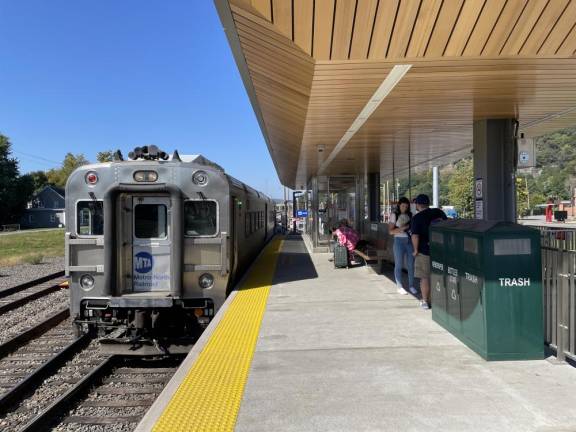Congestion pricing to support Port Jervis line, says MTA
Port Jervis. The MTA deputy commissioner recently broke down the potential benefits of the price hike to area commuters.

When the lower Manhattan congestion pricing starts in March 2024, you might be wondering where that extra $15 you’re paying goes and how it will benefit you. MTA Deputy Commissioner Aaron Donovan told The Pike County Courier, “The current leadership of the MTA and Metro-North have an unprecedented focus on Orange and Rockland counties, and are directing $227 million in investment into the Port Jervis Line and Pascack Valley Line in the 2020-2024 capital program, which is being funded in part with congestion pricing. The vast majority of this is going to the Port Jervis Line, where we have the most trackage.”
He went on to break down the numbers. “The investment includes $100 million for Port Jervis Line capacity improvements, and most of the remainder is for the kind of essential maintenance that keeps the line in a state of good repair and continuing to operate safely and reliably, including $40 million for upkeep of the Moodna Viaduct, $15.9 million for track renewal and $11.4 million in rock slope remediations.”
Donovan added, “As we saw in rebuilding the Port Jervis Line after Hurricane Irene back in 2011, infrastructure resiliency upgrades like the slope work are becoming more important in an era where storms seem to be delivering greater volumes of water over a shorter amount of time. These are all massive investments in infrastructure. Additionally, the MTA is studying how to make the Otisville, Tuxedo, and Sloatsburg stations accessible in accordance with the Americans with Disabilities Act, which is made complicated due to issues caused by freight traffic on the line.”
So in essence, for those commuters who continue to drive into Manhattan instead of taking the train, you’re going to see the money you spend re-invested in the local community and our mass transit offerings.
How the congestion pricing will impact CoachUSA — the only other mass transit option in our area outside of the MTA/New Jersey Transit — is still to be determined. Dan Rodriguez, vice president of Public Affairs for CoachUSA, told The Pike County Courier, “As it’s not settled since hearings will be held, we, along with others, will have an opportunity to address the MTA who will make the ultimate decision on exemptions, which we would like to obtain for all bus classes. This has been our request from the very first day... Moreover, buses bring millions of people into the city who work, go to Broadway shows, eat at its restaurants, and spend billions of dollars which fuel the city’s and the state’s economy.”
When asked if pricing would increase for bus riders, Rodriguez said, “Our management team does everything possible not to increase the farebox prices for our customers. We will continue to vigorously work in maintaining affordable rates, but we will have to assess exactly what the overall costs will be, should our buses that make thousands of trips every week with tens of thousands of individuals into the Central Business District be tolled by [congestion pricing].” Unlike with CoachUSA, MTA fares on the Port Jervis line remain frozen, as they have been for the last nine years.
A study in the Journal of Environmental Economics and Management found that expanding regional train service reduces carbon monoxide and nitrogen oxide pollution, and reduces the use of motorcycles and cars on “leisurely and shopping trips.” The authors, Rafael Lalive, Simon Luechinger, and Armin Schmutzie concluded that, “Lives saved by reducing pollution via rail service growth are worth substantially more than the required subsidies” [to expand rail services.]
Local commuters looking to help reduce pollution any further could consider making use of the Port Jervis Train Line and continuing to pressure local government officials and the MTA to continue their planned expansion of services.